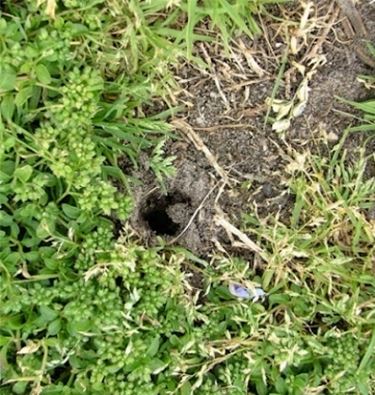Grillotalpa

Garden world

Beings desired and not

We have already said that our garden is actually a world full of life that we often do not even know, given that among bacteria, insects and small animals life proliferates without us intervening in the least. Leaving slightly aside the animals, larger, «controllable» and often distant regardless of human events, most of the time it is necessary to worry about insects. This megagroup of the animal world has hundreds of thousands of species, some of which conflict not so much with man, but with his interests; for example, it is well known that lice annoy children because they quickly attack their scalp, or ticks undermine the serenity of our doggie friends because they love to proliferate in their fur, or the grasshoppers and other insects ruin our crops because they feed on the leaves of many species dear to us, which tend to die without being able to carry out chlorophyll photosynthesis. It is also true that some insects help us, often also to counteract the harmful activities of others like them: a perfect example for this case are ladybugs, so cute and lovable but also efficient against weed mites of fruit plants.
Grillotalpa
One of the insects that most annoys the human being and his interests related to agriculture is the grillotalpa; this insect belongs to the Orthoptera family and has a name that quickly explains its fundamental characteristics: leaving out the «cricket» component probably linked to similarity in the structure of the insect’s exoskeleton, the word «mole» indicates that one of its peculiarities is that of digging just like the cute animal. And in fact the greatest damage the grillotalpa causes them precisely with its underground tunnels: the life it carries out is mainly centered under the surface and away from sunlight, because it continuously digs tunnels up to one meter deep, to which it also approaches some burrows of about spherical shape to stop and lay eggs. But it’s not just this, in fact the grillotalpa loves to feed on roots and tubers that it encounters in its excavation works and this undermines both the fruits of the harvest such as carrots and potatoes and the growth of other plants because they are ruined by the root. To this is associated the fact that the dense tunnels dug by this insect make the earth a little unstable and also difficult for the plants to cultivate and live.
Curiosity
The favorite target of the grillotalpa are green grassy grounds, where it is particularly at ease and in fact it ruins the underlying structure of the grass which often collapses and turns yellow quickly; but it also loves tuber crops such as potatoes, and also those of tomatoes and beets. Among other things, it has a marked propensity for reproduction, given that the females lay hundreds of eggs that almost all reach maturity (with a cycle of about two years to become adult insects, passing from the hatching of the egg to the larval state and then of pupa). The numbers of presence of the grillotalpa are so significant that its loyal hunters are unable to limit its diffusion, particularly marked in humid and friable soils, such as peaty ones; and nevertheless there are many species that love to hunt and eat it: small mammals such as moles, shrews and hedgehogs, small birds such as blackbirds, hoopoes and some birds of prey. The contrast of its diffusion can take place mechanically, creating nests which are then burned or otherwise destroyed after being populated, and chemically with products created specifically to poison the animal.




